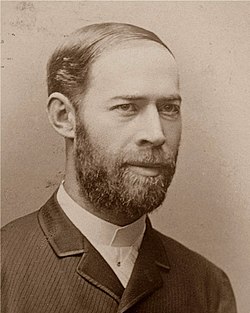Statement
The principle of least constraint is a least squares principle stating that the true accelerations of a mechanical system of  masses is the minimum of the quantity
masses is the minimum of the quantity

where the jth particle has mass  , position vector
, position vector  , and applied non-constraint force
, and applied non-constraint force  acting on the mass.
acting on the mass.
The notation  indicates time derivative of a vector function
indicates time derivative of a vector function  , i.e. position. The corresponding accelerations
, i.e. position. The corresponding accelerations  satisfy the imposed constraints, which in general depends on the current state of the system,
satisfy the imposed constraints, which in general depends on the current state of the system,  .
.
It is recalled the fact that due to active  and reactive (constraint)
and reactive (constraint)  forces being applied, with resultant
forces being applied, with resultant  , a system will experience an acceleration
, a system will experience an acceleration  .
.
Gauss's principle is equivalent to D'Alembert's principle.
The principle of least constraint is qualitatively similar to Hamilton's principle, which states that the true path taken by a mechanical system is an extremum of the action. However, Gauss's principle is a true (local) minimal principle, whereas the other is an extremal principle.
Hertz's principle of least curvature
Hertz's principle of least curvature is a special case of Gauss's principle, restricted by the three conditions that there are no externally applied forces, no interactions (which can usually be expressed as a potential energy), and all masses are equal. Without loss of generality, the masses may be set equal to one. Under these conditions, Gauss's minimized quantity can be written

The kinetic energy  is also conserved under these conditions
is also conserved under these conditions

Since the line element  in the
in the  -dimensional space of the coordinates is defined
-dimensional space of the coordinates is defined

the conservation of energy may also be written

Dividing  by
by  yields another minimal quantity
yields another minimal quantity

Since  is the local curvature of the trajectory in the
is the local curvature of the trajectory in the  -dimensional space of the coordinates, minimization of
-dimensional space of the coordinates, minimization of  is equivalent to finding the trajectory of least curvature (a geodesic) that is consistent with the constraints.
is equivalent to finding the trajectory of least curvature (a geodesic) that is consistent with the constraints.
Hertz's principle is also a special case of Jacobi's formulation of the least-action principle.
Philosophy
Hertz designed the principle to eliminate the concept of force and dynamics, so that physics would consist exclusively of kinematics, of material points in constrained motion. He was critical of the "logical obscurity" surrounding the idea of force.
I would mention the experience that it is exceedingly difficult to expound to thoughtful hearers that very introduction to mechanics without being occasionally embarrassed, without feeling tempted now and again to apologize, without wishing to get as quickly as possible over the rudiments, and on to examples which speak for themselves. I fancy that Newton himself must have felt this embarrassment...
To replace the concept of force, he proposed that the acceleration of visible masses are to be accounted for, not by force, but by geometric constraints on the visible masses, and their geometric linkages to invisible masses. In this, he understood himself as continuing the tradition of Cartesian mechanical philosophy, such as Boltzmann's explaining of heat by atomic motion, and Maxwell's explaining of electromagnetism by ether motion. Even though both atoms and the ether were not observable except via their effects, they were successful in explaining apparently non-mechanical phenomena mechanically. In trying to explain away "mechanical force", Hertz was "mechanizing classical mechanics". [2]
This page is based on this
Wikipedia article Text is available under the
CC BY-SA 4.0 license; additional terms may apply.
Images, videos and audio are available under their respective licenses.



























